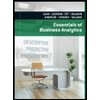Campbell Company manufactures and sells adjustable canopies that attach to motor homes and trailers. The market covers both new unit purchases as well as replacement canopies. Campbell developed its business plan for the year based on the assumption that canopies would sell at a price of $400 each. The variable costs for each canopy were projected at $200, and the annual fixed costs were budgeted at $100,000. Campbell’s after-tax profit objective was $243,000; the company’s effective tax rate is 40 percent. While Campbell’s sales usually rise during the second quarter, the May financial statements reported that sales were not meeting expectations. For the first five months of the year, only 350 units had been sold at the established price, with variable costs as planned, and it was clear that the after-tax profit projection for the year would not be reached unless some actions were taken. Campbell’s president assigned a management committee to analyze the situation and develop several alternative courses of action. The following mutually exclusive alternatives, labeled A, B, and C, were presented to the president: A. Lower the variable costs per unit by $25 through the use of less expensive materials and slightly modified manufacturing techniques. The sales price will also be reduced by $30, and sales of 2,200 units for the remainder of the year are forecast. B. Reduce the sales price by $40. The sales organization forecasts that with the significantly reduced sales price, 2,800 units can be sold during the remainder of the year. Total fixed and variable unit costs will stay as budgeted. C. Cut fixed costs by $10,000, and lower the sales price by 5 percent. Variable costs per unit will be unchanged. Sales of 1,900 units are expected for the remainder of the year. a.Determine the number of units that Campbell Company must sell in order to break even assuming no changes are made to the selling price and cost structure. b. Determine the number of units that Campbell Company must sell in order to achieve its after-tax profit objective. c. Determine which one of the alternatives Campbell Company should select to achieve its annual after-tax profit objective. Be sure to support your selection with appropriate calculations.
Master Budget
A master budget can be defined as an estimation of the revenue earned or expenses incurred over a specified period of time in the future and it is generally prepared on a periodic basis which can be either monthly, quarterly, half-yearly, or annually. It helps a business, an organization, or even an individual to manage the money effectively. A budget also helps in monitoring the performance of the people in the organization and helps in better decision-making.
Sales Budget and Selling
A budget is a financial plan designed by an undertaking for a definite period in future which acts as a major contributor towards enhancing the financial success of the business undertaking. The budget generally takes into account both current and future income and expenses.
Campbell Company manufactures and sells adjustable canopies that attach to motor homes and trailers. The market covers both new unit purchases as well as replacement canopies. Campbell developed its business plan for the year based on the assumption that canopies would sell at a price of $400 each. The variable costs for each canopy were projected at $200, and the annual fixed costs were budgeted at $100,000. Campbell’s after-tax profit objective was $243,000; the company’s effective tax rate is 40 percent.
While Campbell’s sales usually rise during the second quarter, the May financial statements reported that sales were not meeting expectations. For the first five months of the year, only 350 units had been sold at the established price, with variable costs as planned, and it was clear that the after-tax profit projection for the year would not be reached unless some actions were taken. Campbell’s president assigned a management committee to analyze the situation and develop several alternative courses of action. The following mutually exclusive alternatives, labeled A, B, and C, were presented to the president:
A. Lower the variable costs per unit by $25 through the use of less expensive materials and slightly modified manufacturing techniques. The sales price will also be reduced by $30, and sales of 2,200 units for the remainder of the year are
B. Reduce the sales price by $40. The sales organization forecasts that with the significantly reduced sales price, 2,800 units can be sold during the remainder of the year. Total fixed and variable unit costs will stay as budgeted.
C. Cut fixed costs by $10,000, and lower the sales price by 5 percent. Variable costs per unit will be unchanged. Sales of 1,900 units are expected for the remainder of the year.
a.Determine the number of units that Campbell Company must sell in order to break even assuming no changes are made to the selling price and cost structure.
b. Determine the number of units that Campbell Company must sell in order to achieve its after-tax profit objective.
c. Determine which one of the alternatives Campbell Company should select to achieve its annual after-tax profit objective.
Be sure to support your selection with appropriate calculations.
Trending now
This is a popular solution!
Step by step
Solved in 4 steps with 1 images








